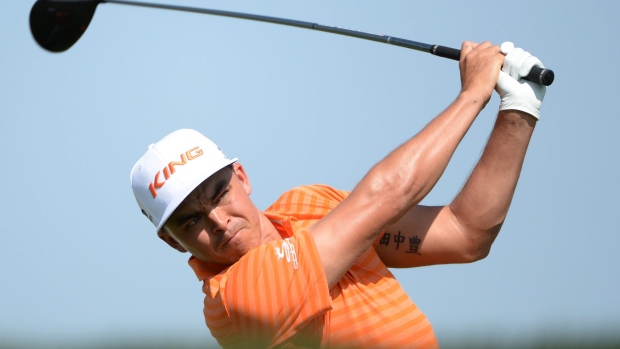Feb 8, 2016
Fowler, Henderson end up on wrong side of aggressiveness
Shots from Sunday’s final rounds on both tours bring into focus the delicate balance between aggressiveness and caution at the top level of the game, Bob Weeks writes
By Bob Weeks

Was it an unlucky bounce or a poor club choice?
That question can be asked of both Rickie Fowler and Brooke Henderson after the two golfers missed opportunities to win on their respective tours over the weekend. In both situations, shot selection at a crucial time may have played a big part in why they left without the trophy.
It brings into focus the delicate balance between aggressiveness and caution at the top level of the game. When do you go for it? When do you lay back?
Fowler’s situation happened on the 71st hole at the Waste Management Phoenix Open on Sunday. Sitting on a two-shot lead, he hit a driver on the 317-yard par-4 17th hole and watched in horror as his ball landed, scooted across the green and into a water hazard at the back.
“I’m hitting a chip-cut driver,” he told reporters after losing a four-hole playoff to Hideki Matsuyama. “Usually don’t expect it to hit on the downslope and then go 360. So that was a bit unfortunate. I hit it right online, hit it exactly where I was looking. That’s kind of the unfortunate part to hit the shots that I did and to pull them off and then it kind of backfired there. Hit a perfect shot.”
A perfect shot, maybe. A perfect result? No.
On Saturday, Henderson was in the hunt for her second LPGA title. She trailed eventual winner Ha Na Jang by a shot and needed a birdie on the par-5 18th to have a shot. In wet, rainy, cold conditions, she smartly decided to lay up on her second shot on a hole that featured water in front of the green.
However her club selection was somewhat curious. She used a hybrid, hooked it and watched as it rolled and rolled within inches of the hazard, leaving her with an awkward stance on her third. Even with the mediocre swing, a ball running that far on soggy fairways was a surprise.
“I was trying to take it 20 yards right of that and like 10 yards back from the end of the fairway,” Henderson said after her round, “so I drew it a little bit, so it wasn't the ideal situation, but it really wasn't too far off from where I wanted.”
In this case, it was a good but certainly aggressive plan. Ten yards is not a lot of margin for error. In her case it was not an ideal shot and it was a less-than-ideal result.
In both situations, a more cautious approach might have yielded better results. If Fowler his a three-iron, he takes the water out of play and has a mere flip wedge into the green, setting up a birdie chance.
If Henderson uses a five-iron, lays it back 25 or 30 yards from the end of the fairway, she also takes the water out of play and also has a wedge for her next shot.
Of course it’s easy to assess those situations now, with the benefit of hindsight. If the two shots came off as planned, we might be praising both players rather than questioning them. And that’s what’s likely going through their minds at the time – that there’s no possible chance of disaster. They think more of making shots, not the what ifs, should they miss them. Golf is a game of unlucky bounces.
It’s also easy to say that Fowler and Henderson have gained more than they’ve lost by playing this way, by being aggressive golfers who take on challenges. Last year, Henderson told me the day she stops playing aggressively is the day she stops playing golf. It probably won’t be the last time either one comes out on the wrong side of an aggressive play.
But finding the line between aggressive and smart may be the key. A two-shot lead with two holes to go may require a player to dial it down. A golfer chasing the lead, however, would likely be better bringing in more risk.
No doubt both Fowler and Henderson will reassess their play from the weekend and take what they learned into their next event. If nothing else, it’s easy to see that they are both playing well and if they continue to do so, more chances to win will come.
